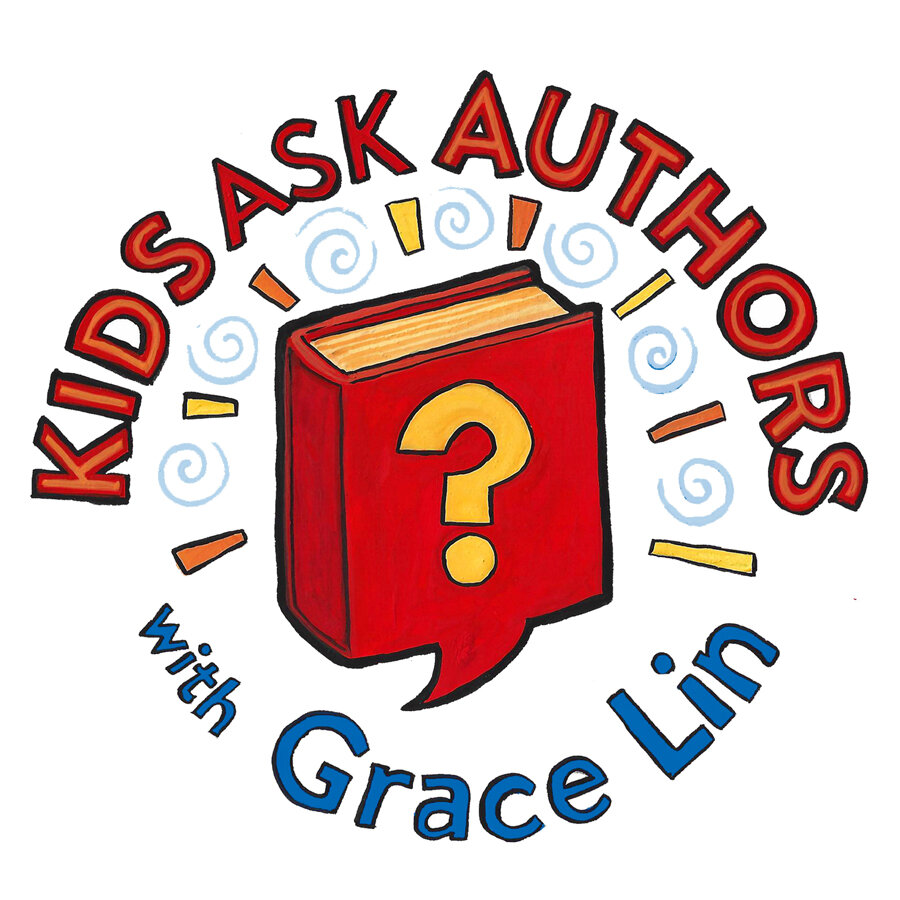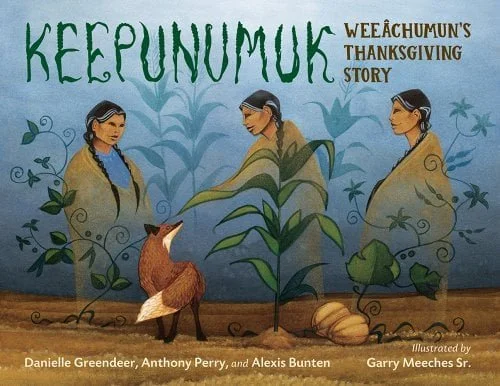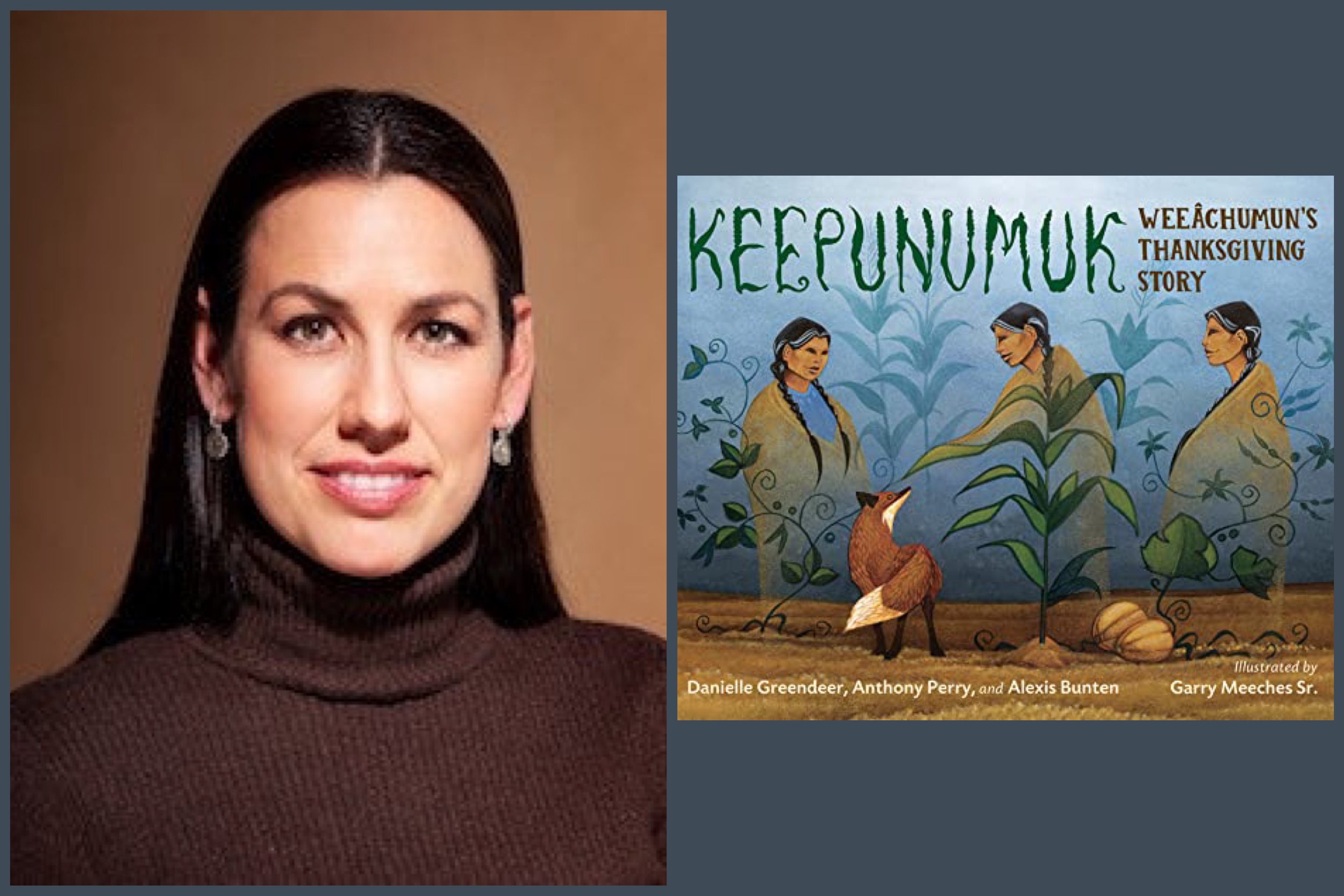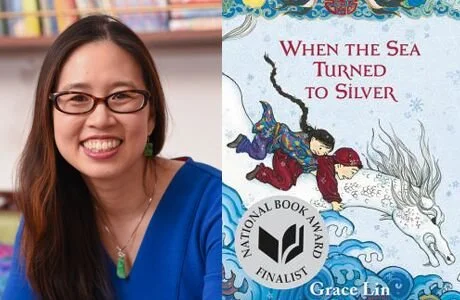Episode #141: Why did you write this book and how do I say the title? -with Alexis Bunten
Welcome back to Kids Ask Authors! Thank you for joining us today with special guest author, Alexis Bunten. Grace and Alexis answer a great kid question, “Why did you write this book and how do I say the title?”
TRANSCRIPT:
Grace Lin: Hello, I'm Grace Lin, children's book author and illustrator of many books including the middle grade novel, Where the Mountain Meets the Moon, and the picture book A Big Mooncake for Little Star.
Today, I'm here with Alexis Bunten author of the picture book, Keepunumuk: Weeâchumun's Thanksgiving Story, co-written with Danielle Greendeer, Anthony Perry, and illustrated by Gary Meeches. Welcome, Alexis.
Alexis Bunten: Hi Grace. How you doing today?
Grace Lin: Good, thank you so much for being here.
Alexis Bunten: Of course.
Grace Lin: Are you ready for today's kid question?
Alexis Bunten: Yes, I am. Bring it on.
Grace Lin: Today's question is from a kid named Kaysen, and they ask, why did you write this book and how do I say the title of your book?
Alexis Bunten: Well, I'll start with the title because that is the question I most often get asked, and it is pronounced Keepunumuk: Weeâchumun's Thanksgiving. And Keepunumuk is the Wampanoag language word for a harvest feast, and there's many throughout the year. And Weeâchumun is the word for corn. And the story of the first Thanksgiving is told from the perspective of corn herself.
Grace Lin: Oh, how interesting. Can you say the title again, slower and Louder?
Alexis Bunten: Yes. Keepunumuk: Weeâchumun's Thanksgiving.
Grace Lin: Oh, awesome. Thank you. I'm not quite sure I got it quite right when I said it, so I'm glad that Kaysen asked this question. Why did you write this book?
Alexis Bunten: Well, Danielle, Tony, and I wrote this book because all three of us being Native American from three different tribes from the east coast, the middle of America, and the west coast, we all grew up with funny experiences around Thanksgiving. When we were first exposed to Thanksgiving in the popular media and in school, it presented Native Americans, us, as like the other.
And even though the story was portrayed that the natives helped the pilgrims, it was told from a point of view that made us as native people seem like the others, and that it was told from the perspective of the pilgrims or the people who settled here, or immigrants. And we wanted to write a book for children that would make all children feel totally included in the story and not like an us/them thing.
Grace Lin: That's a great idea and I'm so glad that's the inspiration. Because it is true. When I think about the Thanksgiving stories that were told to me when I was younger, it was a very ... like the natives were the foreigners, which is completely not correct at all, considering.
Alexis Bunten: Right. I know.
Grace Lin: The pilgrims were the ones that came here.
Alexis Bunten: They were the side characters.
Grace Lin: Yeah.
Alexis Bunten: But everybody's the main character. And the other thing that we did in writing this story, especially from the perspective of the corn, was to try to make nature and animals and plants a central element of the story. Because when we do have feasts, especially harvest feasts, we tend to objectify nature and what we're eating, when we're all in this world together and we're all equally valuable.
Grace Lin: Is that why you decided to use corn as the main character?
Alexis Bunten: Yes. Well, two reasons. One was to center nature and have children, kids, be able to pay attention to nature as not just something you eat, but something that we live with and exist within this earth. But also, by telling it from the perspective of corn, then we're by default not telling it from pilgrim's perspective or a native perspective, thereby making all people, all human beings, equal and in relation to nature and a part of nature.
Grace Lin: Did you find it challenging to write from the perspective of corn versus a person?
Alexis Bunten: No, not really. And the main reason is because Danielle, our lead writer who is Wampanoag, the tribe that did indeed help the pilgrims after that first harsh winter, she has been reviving King Philip's corn, which is their traditional ancestral corn that they've been growing there for thousands of years, so she has a very deep relationship with corn, and it was easy for her and us too. I actually grew native corn as a part of my writing process to understand and meditate on what corn's voice would be.
Grace Lin: Oh, how interesting. Give me some adjectives of how you would describe corn's voice.
Alexis Bunten: Corn's voice? Well, I can tell you about corn's personality. Corn has evolved over thousands of years alongside of people, and people have co-evolved alongside corn. Corn actually started out as a grain in what is now called Mexico. And the Mayans and Aztecs started to cultivate that grain and they helped the grain to grow, and in turn, the grain adapted into even more edible plants for people to eat. They worked together hand in hand.
Corn, her voice is, she's very cooperative and she likes to work with lots of other species, and humans at the same time have a lesson in that, that we're supposed to help plants and animals and that they help us, and we all work to make ecosystems in the world be healthy together. And we can't forget that relationship that we have with each other.
Grace Lin: Well, that's fascinating and I love that so much. You really inspired me because I've been wrestling with this story about the Bing cherry for a long, long time, because the Bing cherry was actually created by a Chinese man in the United States named Ah Bing. But so little is known about him that I could never get a good story about it. And I was like, oh, maybe I should write it from the perspective of the cherry. It would be so interesting.
Alexis Bunten: Oh yeah, that's totally in line.
Grace Lin: Yeah. Thank you for that. That's such an inspiration for me as a writer.
Alexis Bunten: You're welcome.
Grace Lin: Well, thank you very much for answering today's question, and thank you, Kaysen, for asking such a great one.
Alexis Bunten: Thanks, Kaysen.
Grace Lin: Bye
Today’s KID BOOK REVIEW comes from Mina. Mina is reviewing, Keepunumuk: Weeâchumun's Thanksgiving Story by Alexis Bunten, Danielle Greendeer, Anthony Perry, and illustrated by Gary Meeches.
The book I am reporting on is called Keepunumuk. The authors for this book are Danielle Greendeer, Anthony Perry and Alexis Bunten and the illustrator is Garry Meeches Sr. This book is about the first Thanksgiving from the First Peoples’ point of view. Weeâchumun, the spirit of the corn, asked the First Peoples to teach the Newcomers to plant her seeds and the seeds of her sisters, Beans and Squash, to help them survive. This led to the first Thanksgiving. I liked that the book showed the connections between the First Peoples, the animals, the land, and the spirits of the crops. Also, I liked that this book was a story in a story being told by real people from the Wampanoag tribe.
Thank you so much Mina!
More about today’s authors:
Alexis Bunten, PhD, is an Alaska Native writer, media maker, consultant and educator. Her first book, “So, how long have you been Native?” Life as an Alaska Native Tour Guide (2015) won the Alaska Library Association Award for its originality, and depth. Her writing has appeared in First American Art Magazine, Cultural Survival Quarterly, NMAI Magazine, and in many academic journals. Her first childrens’ book, Keepunumuk: Weeâchumun’s Thanksgiving Story, co-authored with Danielle Hill and Tony Perry, will be published with Charlesbridge in 2022. Alexis has won awards for her work from the US National Science Foundation, the Ford Foundation, and the MacArthur Foundation, among many others. She has also been featured in Forbes, the Washington Post, and the Seattle Times. Alexis lives in Monterey, California with her husband, daughter, 3 dogs, cat and lizard. In her free time, she enjoys hiking, studying DNA and creating cultural tours.
Grace Lin, a NY Times bestselling author/ illustrator, won the Newbery Honor for Where the Mountain Meets the Moon and her picture book, A Big Mooncake for Little Star, was awarded the Caldecott Honor. Grace is an occasional commentator for New England Public Radio , a video essayist for PBS NewsHour (here & here), and the speaker of the popular TEDx talk, The Windows and Mirrors of Your Child’s Bookshelf. She is the co-host of the podcast Book Friends Forever, a kidlit podcast about friendship and publishing (geared for adults). Find her facebook, instagram , twitter ( @pacylin) or sign up for her author newsletter HERE.
Thank you so much for tuning into to Kids Ask Authors! We would appreciate your continued support on our Patreon page! Please consider becoming a member for all kinds of exclusive perks. https://www.patreon.com/kidasaskauthorspodcast
Order the 2022 WTMMTM CALENDAR: https://shop.carlemuseum.org/category/books/autographed-books/grace-lin
Sign up for Grace's author newsletter: https://lp.constantcontactpages.com/su/kEmJMT3/newsletter



